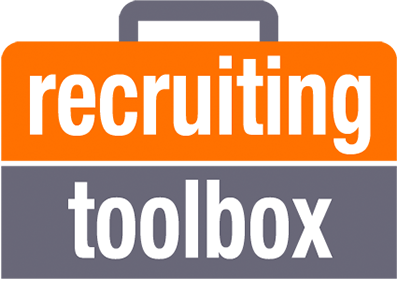At Recruiting Toolbox, we do a lot of work to help companies improve who they hire and how they hire. And the how part sometimes involves some pretty basic – but critical – changes. Today, almost all companies have a big focus on improving diversity. But we’ve noticed some processes that are still outdated (very 2005) that can lead hiring teams to make unfair and poor hiring decisions.
While I’m happy to report that most corporate recruiters now regularly assign focus areas to interviews (the free for all, wing it approach where interviewers walk in with no idea what to focus on is dying – yeah!), we still see a problem, especially with some tech hiring teams. The problem is: the hiring manager is often the only person focused on soft skills (aka core competencies, behaviors, attributes). Here's why this is a big problem:
There's not enough focus on soft skills during the interview process
We’ve conducted focus groups and trainings with thousands of hiring managers, recruiters, and HR reps, and 90%+ say the primary reason people fail at their companies is related to soft skills – couldn’t adapt, couldn’t take feedback, couldn’t collaborate, wasn’t inclusive, wasn’t a great communicator, couldn’t navigate the matrixed environment, lacked a strong work ethic, couldn’t learn quickly enough, etc. On top of that, a report from LinkedIn found that 92% of talent professionals say soft skills matter as much or more than hard skills.
But, If you look at a typical 5-6 person interviewing team, each with a 30-60 minute interview to evaluate hard and soft skills, that means that if the hiring manager is the only person focused on soft skills, you’re dedicating as little as 1/6th of your interview process to something that accounts for a majority of a new hire’s success. And that assumes the hiring manager focuses all of their time only on the soft skills, which is unlikely.
There's a high risk of biases driving poor decisions
If diversity and inclusion is a focus at your company, then you’ve certainly looked at ways to reduce bias, right? Well, we all have biases, and they range from pedigree bias, to communication style bias, to stereotypes and generalizations. And these biases show up the most when evaluating soft skills, as they’re more open to interpretation than many hard or technical skills. The most dangerous biases in an interviewing context – in my opinion – are confirmation bias and similarity bias. Why? Because they create the most false negative risk (missing out on a good hire).
- Confirmation bias is when you seek out information – and sometimes only that information – that confirms your pre-held beliefs, and ignore information that counters your beliefs. For example, in an interview situation you may have a bias that someone older may not be able to learn as quickly as someone younger, and then find ways to validate that bias by focusing in on questions that generate responses that give you “evidence” that confirms that this older candidate isn’t learning as quickly as other younger candidates. You don’t give them a fair shot.
- Similarity bias (or likeability bias) is when your ability to relate to this person, largely because they’re like you (age, gender, same school, same pedigree, from the same geography or culture). You end up with a very positive bias – and maybe ignore or put very little weight in concern areas – where you’re much more likely to hire someone who is like you than someone who is different. This is still referred to as the “would I want to have a beer with this person?” test, and it’s going to have a major negative impact if you’re looking to widen your aperture and hire beyond your traditional homogenous profile. In fact, Airbnb moved away from the “find something in common with this candidate” approach for this very reason.
The hiring manager can’t go deep enough to evaluate soft skills fairly
OK, back to only assigning soft skills to the hiring manager. If you let one person – with limited time – make the decision on something as important as soft skills, you’re very likely to see that person take short cuts – they just don’t have time to go deep. And you’re very likely to get an evaluation loaded with personal biases. This hiring manager may even be very pro-inclusion and genuinely want to hire different profiles, but the pressure to fill the role, the pressure to avoid risk (sameness = safety to most people), and the limited time to get depth and breadth…all of those things create incredible risk that you will not evaluate soft skills fairly or go deep enough to gather real evidence.
Solo, hiring manager-only hiring decisions don’t leverage the insights from the other interviewers
What compounds this problem even more is a process where the whole team doesn’t get together to talk live after the interviews, to debrief and share their feedback on each candidate. Our ATS's with their 1-5 rating scales and open text fields are not built for high decision quality.
To get high-quality decisions– especially if you’re trying to evaluate something like soft skills, with so much potential for bias and individual interpretation – we need live, transparent debriefs, where the hiring manager and their interviewers leverage a structured process to weigh the evidence gathered and needed to predict on the job success. Closed or solo decision making is ripe for bias, removes opportunities to learn from each other and give feedback on interview feedback (feedback on feedback = real time training), and generally leads to more false negatives.
So, what can we do?
1. First, be sure you have “what good looks like” defined for your org. Remove any generic terms like “culture fit” or “potential” from your vocabulary, and invest in detailed soft skill definitions with related, evidence-oriented interview questions.
2. Train up your interviewers – not just the hiring manager, but the whole interviewing team – in quality behavioral and situational interviewing, with an emphasis on how to ask and evaluate soft skill questions. Include information on what kind of tradeoffs we would and would not make (i.e. is it ever ok to hire an engineer who is dismissive or not very collaborative?).
3. Get your interviewing team aligned. This is where we – as Talent Advisors – lead a conversation with the hiring manager and interviewing team to ensure we’re all on the same page – pre-interviewing. What does good look like? What do we mean by “senior” account rep? What are the must-have deal breakers vs nice to haves? How are we balancing hard skills and soft skills?
4. Make sure each interviewer is assigned focus areas - including hard skills and soft skills - and skilled to evaluate those focus areas.
5. Include interviewers – whenever possible – that reflect the diversity you seek. Avoid homogenous interview teams if you want to bring diversity to your teams.
6. Lead a live, facilitated debrief. Ensure people share feedback from their focus areas, and encourage everyone to be critical of feedback based on generalities, biases, or “feelings” that aren’t backed up by evidence. Ideally, you, as a Talent Advisor, are the facilitator. Some companies like Amazon, Uber, and Google use bar raisers or debrief moderators, or even committees, to ensure more objective hiring decisions.
7. Lead post-mortems on bad hires. What did we miss? Was the bad hire “bad” because they lacked certain soft skills? If so, how do we place more weight on those and move them earlier into our screening process?
8. And, if inclusion is a big goal for your teams, make sure inclusion is one of the core competencies you interview for, especially for manager-level candidates. Many of our clients have expanded their core competencies or values to include inclusion in the past two years. This is one of the keys to ensuring we’re building an inclusive culture – evaluating new hires to see if they would bring an inclusive mindset and expertise to our companies.
You may be thinking, “John, we do all of these things already.” Great! many companies have mechanisms and training in place to ensure soft skills get proper weighting, interviewers are aligned and trained, and quality decisions are being made. But too often, we see individual hiring teams who have moved away from the “company-wide process” and developed their own process. It’s for these teams where you’ll need to show up as a talent advisor, and not only explain what and how to do the things outlined above, but influence them. And influence lives with the why, not the what and how.
Hopefully this article gives you some additional insights into the risks and the WHY for investing in a better approach for those teams. If you have hiring teams that need to improve the way they evaluate soft skills and increase diversity on their teams, feel free to share this article with them, and learn more about our interviewer and hiring manager training workshops.
To receive blog posts like this one straight in your inbox, subscribe to the blog newsletter.

